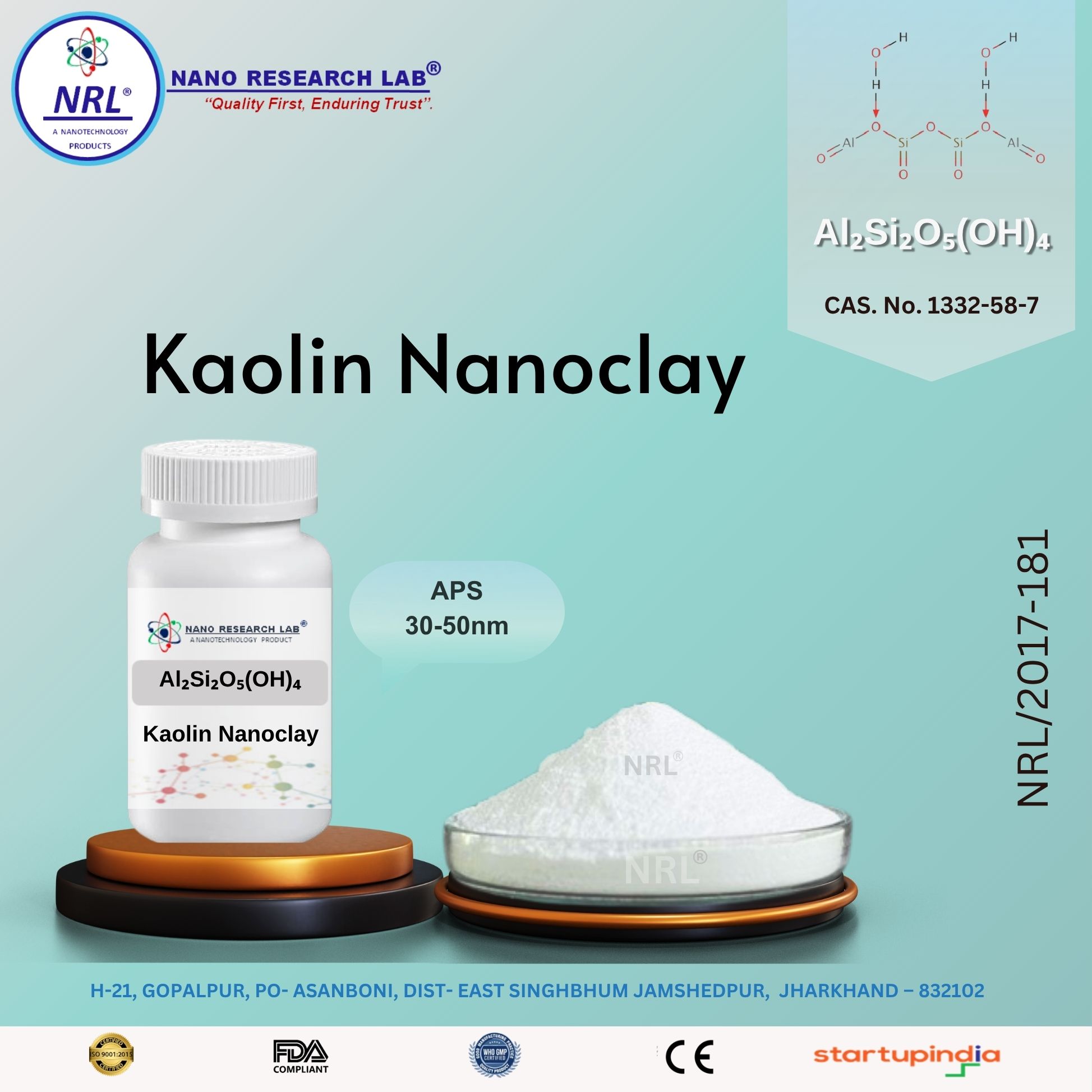
Kaolin Nanoclay (Al2Si2O5(OH)4 , Purity 99%, APS: 50-100NM)
₹1475.00
🧪 Kaolin Nanoclay (Al₂Si₂O₅(OH)₄, Purity 99%, APS 50–100 nm)
⚙️ Technical Specifications
Property | Specification |
|---|---|
Chemical Formula | Al₂Si₂O₅(OH)₄ |
Material Name | Kaolin Nanoclay |
Purity | 99% |
Average Particle Size (APS) | 50–100 nm |
Appearance / Color | White to off-white fine powder |
Crystal Structure | 1:1 Layered Aluminosilicate |
Density | ~2.6 g/cm³ |
Specific Surface Area (BET) | 50–150 m²/g |
Thermal Stability | Up to 500–600 °C |
Solubility | Insoluble in water; chemically stable |
CAS Number | 1332-58-7 |
Storage Conditions | Store in airtight container; avoid moisture, acids, and bases |
🌟 Key Features
High-purity nanoclay with controlled particle size (50–100 nm)
Layered structure with high aspect ratio for reinforcement and adsorption
Thermally and chemically stable
Large surface area for improved dispersibility and reactivity
Environmentally friendly and non-toxic
Easily dispersible in water, polymers, and organic solvents
Enhances mechanical, thermal, and barrier properties in composites
🔬 Applications
1. Polymer & Nanocomposites
Improves mechanical strength, thermal stability, and barrier properties of polymers and bioplastics
Used in epoxy, coatings, adhesives, and films
2. Ceramics & Paints
Enhances ceramic formulations, paints, and coatings for durability and smoothness
3. Adsorption & Environmental Applications
Effective for removing heavy metals, dyes, and pollutants from water
Applied in water treatment and soil remediation
4. Cosmetics & Pharmaceuticals
Acts as a carrier, thickener, or stabilizer in creams, powders, and ointments
Improves texture, viscosity, and stability
5. Research & Nanotechnology
Used in nanocomposite development, hybrid materials, and surface functionalization
Explored in drug delivery, adsorption studies, and polymer reinforcement
⚠️ Handling & Storage
Store in a dry, airtight container to prevent moisture absorption
Avoid contact with strong acids, bases, and oxidizing agents
Handle with gloves, mask, and protective eyewear
Use in well-ventilated areas to prevent dust inhalation
Keep away from heat, sparks, and direct sunlight
